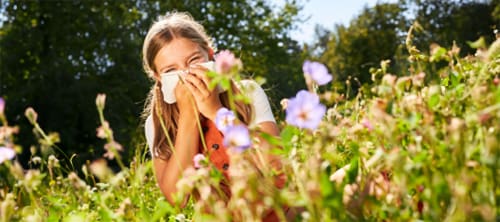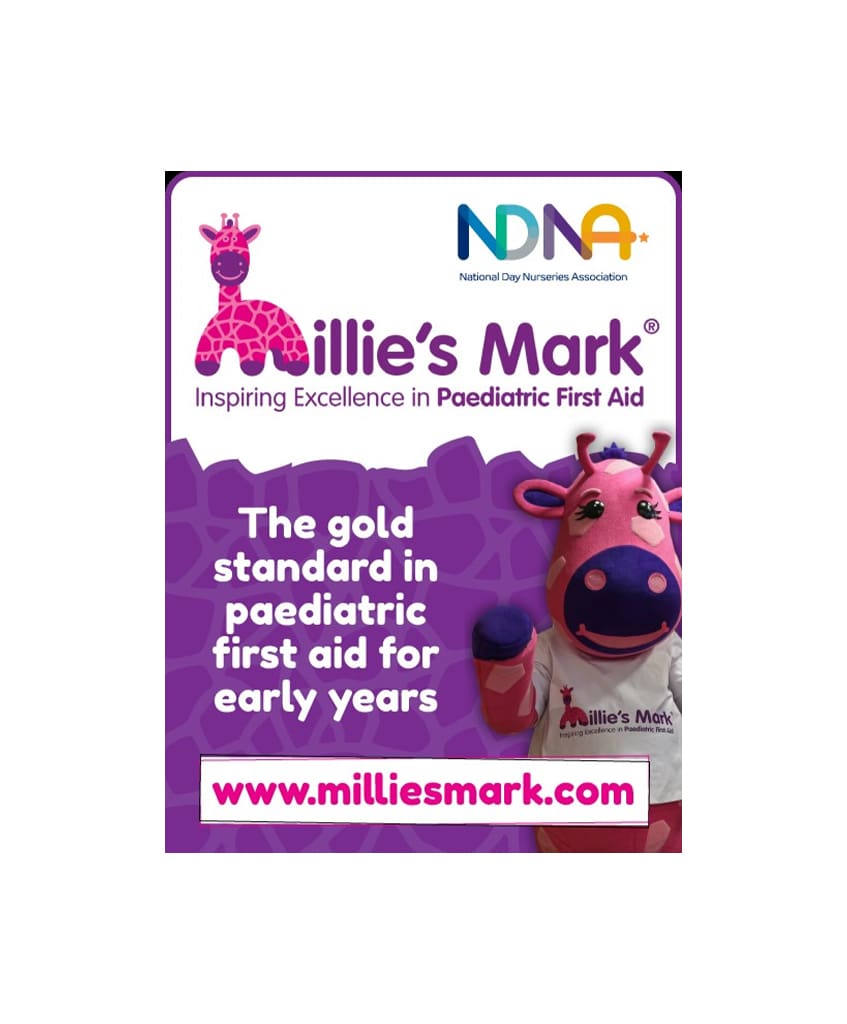Hay fever, also known as allergic rhinitis, is an allergic reaction caused by your immune system overreacting to airborne allergens. Pet dander, pollen, house dust mites, and mould spores are common triggers. Symptoms of hay fever include sneezing, runny or stuffy nose, itchy or watery eyes, itchy throat or ears, coughing, and fatigue caused by histamine release in the body when exposed to these allergens.
Symptoms
Hay fever symptoms vary from mild to severe depending on the allergen and the individual’s sensitivity. Seasonal allergies, which are often triggered by pollen, can cause symptoms at certain times of the year. Some individuals, however, may experience symptoms year-round due to indoor allergens.
Symptoms of hay fever include:
- sneezing and coughing
- a runny or blocked nose
- itchy, red or watery eyes
- itchy throat, mouth, nose and ears
- loss of smell
- pain around the sides of your head and your forehead
- headache
- feeling tired
Types of allergic rhinitis
There are two main types of allergic rhinitis: seasonal and perennial. The ability to identify triggers and manage symptoms effectively can be enhanced by understanding the differences between these types.
Seasonal allergic rhinitis
Pollen from trees, grasses, or weeds is often associated with seasonal allergic rhinitis, which occurs during specific times of the year. As these allergens are prevalent in the air during certain seasons, symptoms are more likely to manifest. When it’s warm, humid, and windy, hay fever usually gets worse between late March and September. Pollen counts are at their highest during this time.
Common symptoms
- Outdoor allergens trigger symptoms.
- Seasonal symptoms occur during certain times of the year.
- Pollens such as tree pollen in the spring, grass pollen in the summer, and weed pollen in the autumn may cause symptoms.
- Sneezing, runny or stuffy nose, itchy eyes, and itching in the throat and ears are common symptoms.
Perennial allergic rhinitis
On the other hand, perennial allergic rhinitis occurs throughout the year regardless of the season. Allergens such as dust mites, pet dander, and mould spores usually cause this type of allergic rhinitis.
Common symptoms
- Symptoms persist throughout the year.
- Indoor allergens, like dust mites, pet dander, mould, or cockroach droppings, are the primary triggers.
- Symptoms may include persistent sneezing, nasal congestion, itchy/watery eyes, and coughing.
Common triggers for hay fever and allergic rhinitis
- Pollen – Tree, grass, and weed pollen are significant triggers for allergic rhinitis, especially during certain seasons. At different times of the year, different types of pollen can cause seasonal allergies.
- House dust mites – Dust, bedding, upholstery, and carpets are ideal habitats for these microscopic organisms. Particularly indoors, dust mite sensitivity can cause allergy symptoms throughout the year.
- Pet dander – Proteins found in the skin flakes, urine, and saliva of pets, such as cats, dogs, rodents, and birds, can trigger allergic rhinitis.
- Mould spores – Mould grows in damp areas such as bathrooms, kitchens, basements, and areas with water damage. Mould spores can trigger allergic reactions in some people when inhaled.
- Cockroach droppings – Cockroach allergens present in their saliva, faeces, and body parts can trigger allergic rhinitis, particularly in urban areas with high cockroach populations.
- Air pollution – While not an allergen in itself, exposure to pollutants like vehicle exhaust, industrial emissions, and cigarette smoke can exacerbate allergic rhinitis symptoms and increase sensitivity to other allergens.
- Occupational allergens – Certain work environments, such as those involving exposure to chemicals, dust, fumes, or animal proteins, can trigger allergic rhinitis in some individuals.
Treatments for hay fever
There’s currently no cure for hay fever and you cannot prevent it. But you can do things to ease your symptoms when the pollen count is high.
Antihistamines, decongestants, nasal sprays, and immunotherapy are common medications used to treat hay fever, along with avoidance of triggers where possible.
How to minimise the symptoms
There’s currently no cure for hay fever and you cannot prevent it.
But you can do things to ease your symptoms when the pollen count is high.
- remove outdoor clothing and shower or wash your hair following high pollen exposure.
- close windows at night.
- vacuum regularly.
- avoid keeping flowers in the house.
- avoid drying washing outside when the pollen count is high or when cutting the grass, as this can bring pollen into the house.
- avoid walking in grassy, open spaces, particularly during the early morning and early evening.
- keep an eye on the weather forecast for information about pollen count levels and avoid going outdoors when the pollen count is Medium or High.
- install pollen filters in your car if they are not already fitted.
- drive with windows closed.
- consider wearing wrap-around sunglasses to stop pollen getting in your eyes when outdoors.
We currently offer an online course on Anaphylaxis and Auto-injectors. Understand the risks of a severe allergic reaction and how to administer adrenaline through an autoinjector. This online course is designed to be completed in under 30 minutes and has the potential to save a life Online : Anaphylaxis and Autoinjectors – Cross Counties Training
If you would like to speak to us about how we could help with your First Aid training requirements, please call us on 01276 586943 or email us at admin@crosscountiestraining.co.uk for hassle-free bookings.









